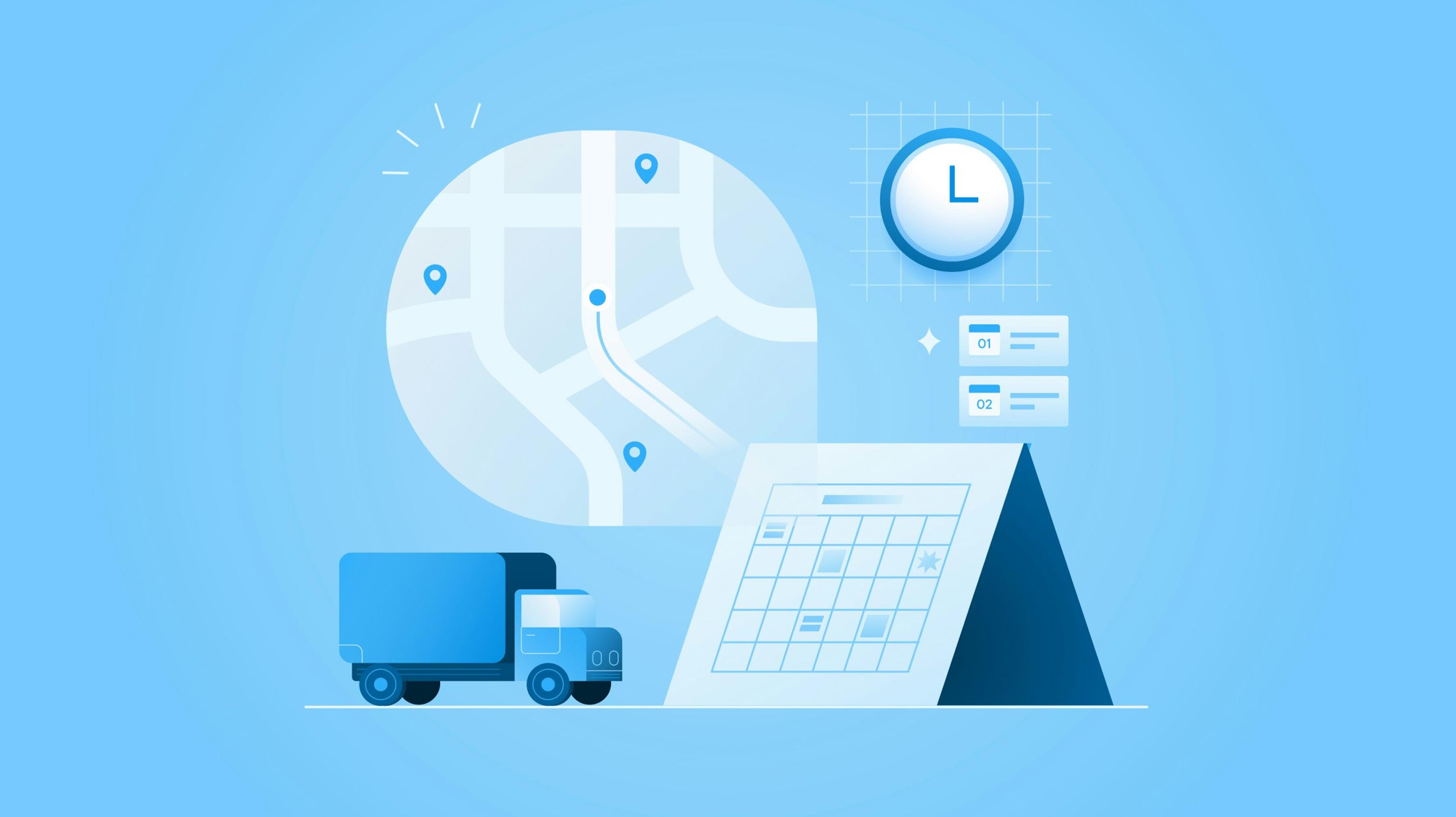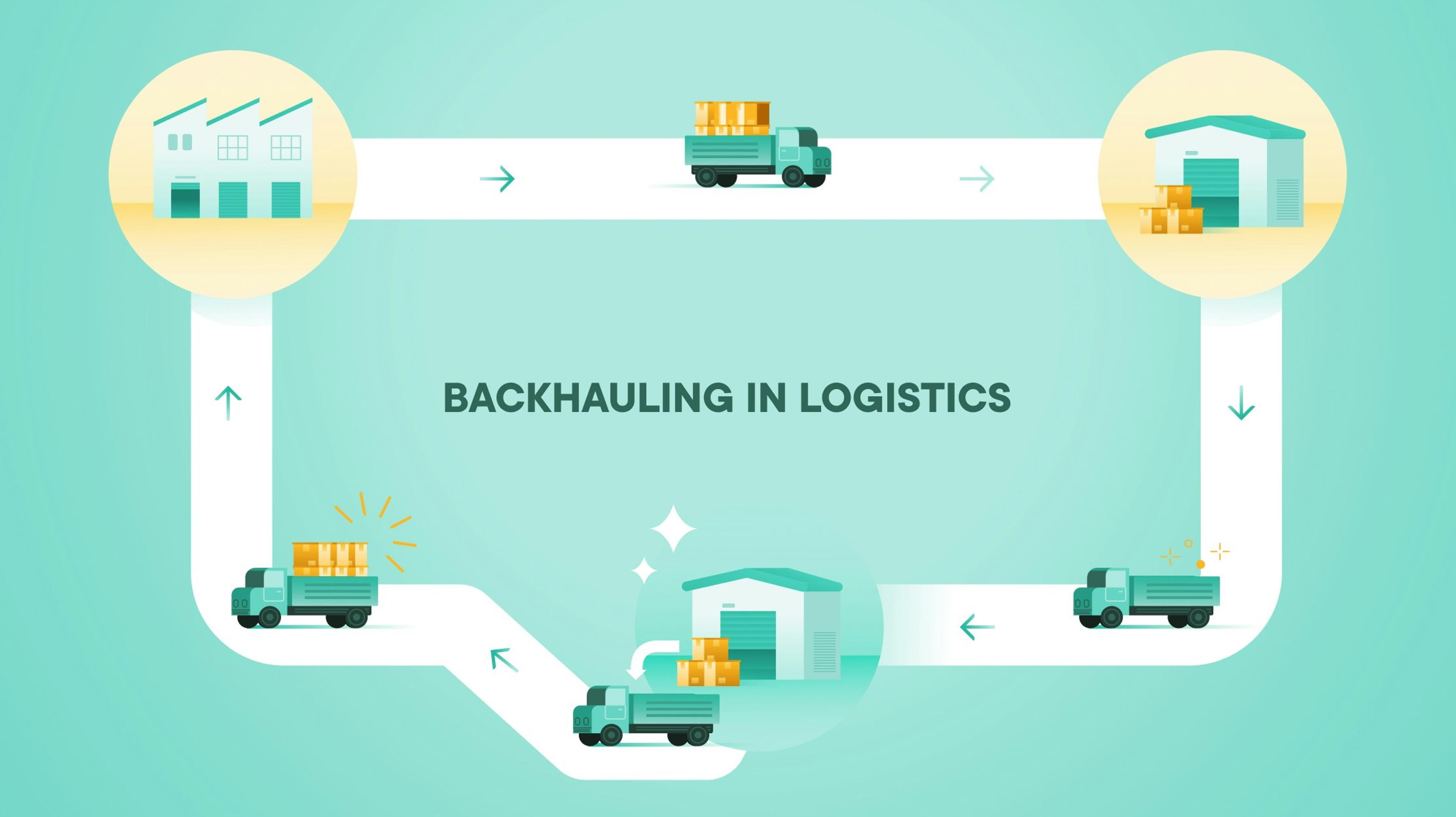Routing vs. Scheduling and How to Optimize Both

Plan your delivery routes with less hassle using Circuit for Teams.
Routing and scheduling are two vital parts of logistics and supply chain management. This article will help you understand why they are good for your business and explain how to optimize both processes to improve delivery operations, reduce costs, and enhance customer satisfaction.
Key takeaways:
- Scheduling means planning time intervals for your drivers to make their assigned deliveries.
- Routing refers to mapping routes for your drivers so deliveries arrive on time.
- Benefits of routing and scheduling include safer driving, better asset visibility, fewer errors, increased revenue, reduced operating cost, better efficiency, and more productivity.
- You can optimize your delivery schedules and routes with software that offers routingautomation, real-time updates, better visibility and control over your delivery operations, and integration with other workflows.

What’s the difference between routing and scheduling?

There is a key difference between scheduling (route scheduling) and routing (route planning). Scheduling means planning time intervals for assigned deliveries, while routing refers to mapping routes to make sure those deliveries happen on time.
Why are routing and scheduling good for business?
Routing and scheduling are essential components of your business’s logistics and supply chain management and have numerous benefits. Here are some reasons routing and scheduling are good for your business.
Safer driving
Routing and scheduling can help promote safer driving practices by optimizing routes and schedules to reduce driver fatigue, minimize traffic congestion, and avoid hazardous driving conditions.
Better asset visibility
Routing and scheduling can improve asset visibility by giving real-time information about the location and status of your vehicles, drivers, and shipments. This can improve inventory management, reduce the risk of theft or loss, and enhance overall supply chain visibility.
Fewer errors
Route planning and route scheduling can reduce errors by giving better visibility and control over operations and automating key processes to minimize the risk of human error.
Increased revenue
Routing and scheduling can increase revenue and improve your bottom line by improving operational efficiency, enhancing customer satisfaction, and reducing costs.
This case study is just one example: Brian works for Applied Data Technologies, a Hewlett-Packard reseller and service provider for schools. Instead of manually importing addresses into Google Maps (with a limit of ten stops per route), Brian downloads the school addresses as an Excel file and imports them into Circuit for Teams.
From there, he can create fully optimized routes and divide them between his two drivers. Plus, his drivers can still use their preferred navigational app (like Google Maps or Waze) to get from stop to stop.
Factoring in the time saved on route planning and route execution, Brian estimates Circuit for Teams saves him more than eight hours a week in labor costs.
Better efficiency
Routing and scheduling can help improve efficiency by enabling route optimization, reducing idle time, and minimizing waste.
For example, Circuit for Teams helped a bicycle courier company handle increased demand during the COVID-19 pandemic.
The company had already made its route planning more efficient by importing recurring pharmacy order addresses directly into the Circuit for Teams software. From there, they could automatically create optimized routes for their couriers to handle the increased volume of medication orders.
Circuit for Teams’ priority stop feature also allowed the company to prioritize certain stops over others, such as refrigerated medications needing immediate delivery.
Thanks to the route planning software they had implemented before the pandemic, this bicycle courier company could meet demand without changing its team or process.
More productivity
Route planning and route scheduling can increase productivity in several ways, including optimizing schedules, improving resource utilization, and reducing downtime.
For example, the catering and events business Roll This Way uses Circuit for Teams route optimization software to automate its routing and planning processes. This saves the business eight hours weekly, which workers can now put back into growing their business.
How to optimize routing and scheduling

Optimizing route planning and scheduling is an essential part of managing delivery operations. Improving the efficiency of your drivers’ routes can reduce operating costs, increase productivity, and give a better customer experience.
Next, we’ll detail some ways to optimize route planning and scheduling to achieve these benefits.
Use the right software
Routing software can be an effective tool for optimizing routing and scheduling for your delivery operations. Route planning and scheduling software can automate the process of creating and optimizing routes, reducing the risk of errors, improving efficiency, and saving time.
Circuit for Teams is a route planning and route optimization software designed specifically for delivery operations. It offers a range of features that can help businesses optimize routing and scheduling, including:
- Automated routing: Advanced algorithms let you create effective routes based on factors like traffic, delivery times, and resource availability. This can help you reduce travel time, save fuel costs, and improve your last-mile delivery times.
- Real-time updates: Get real-time status notifications and ETAs so you can quickly respond to unexpected routing needs or scheduling changes.
- Better visibility and control: Live driver tracking lets you make live changes to their routes, while dynamic route planning accounts for last-minute stops, unexpected traffic issues, and anything else you can’t plan for in advance.
- Integration with existing systems: Integrating Circuit for Teams with existing systems, such as customer relationship management (CRM) and enterprise resource planning (ERP) systems, makes incorporating your routing and scheduling data into existing workflows easier.
Circuit for Teams can help you optimize routing and scheduling by automating the process, improving efficiency, reducing errors, and giving workers better visibility and control over their delivery operations. This all results in more on-time deliveries.
Automate
Automating route planning can be better than manual route planning since it can cut planning time, reduce operating costs, and improve delivery times.
On the other hand, manual route planning can be time-consuming and prone to errors, and may not account for relevant factors like traffic, weather, and delivery time windows.
Here are some ways to implement automation for routing and scheduling:
- Invest in software. Circuit for Teams is a route planning and optimization software that can automate the process of creating and optimizing routes. It uses advanced algorithms for route and schedule optimization based on factors like traffic, delivery times, and resource availability.
- Use GPS tracking. This gives you real-time data on the location of your vehicles and drivers, which you can use to optimize vehicle routing and scheduling.
- Integrate data from other systems. Integrating with your other systems, such as CRM or ERP, can improve route planning and scheduling accuracy by making other areas of your business more efficient. For example, it can make it easier to incorporate customer data (like addresses and contact details) into your route planning, so packages arrive at the correct destination.
- Use machine learning. Machine learning algorithms can analyze historical data on delivery routes to identify patterns and optimize future routes.
Prioritize
Here are some specific examples of how prioritizing stops can benefit businesses:
- Improving delivery times. Prioritizing stops can help you deliver your product to customers more quickly, increasing customer satisfaction and the likelihood of repeat business. For example, a courier company might prioritize stops based on delivery time windows so urgent deliveries are first.
- Reducing fuel costs. Prioritizing stops can also help you reduce fuel costs by minimizing travel time and distance. For example, a delivery company might prioritize stops based on proximity so drivers don’t drive back and forth across the same area unnecessarily.
- Optimizing resource utilization. Prioritizing stops can also help you optimize resource utilization, such as drivers and vehicles. For example, a delivery company might prioritize stops based on driver availability or vehicle capacity to use resources as efficiently as possible.
Organize
Organizing can also help optimize your vehicle routing and scheduling. Here are some examples:
- Grouping deliveries by location. Organizing deliveries by location can help minimize travel time and distance between stops. This can reduce transportation costs and improve delivery times. For example, a courier company might group deliveries by neighborhood or zip code to create more efficient routes.
- Clustering deliveries by time. Grouping deliveries that need to be made during the same time period can prevent unnecessary backtracking and reduce travel time. For example, a delivery company might cluster deliveries that need to be made during rush hour to minimize the impact of traffic.
- Managing inventory. Tracking your inventory levels can help you have the right products available in the right quantities to fulfill customer orders, reducing out-of-stocks and backorders.
Review
Reviewing your scheduling and routing processes gives you the chance to assess what works and what doesn't. This helps you optimize them as necessary, so you can make the most of your resources.
Here are some things that reviewing your scheduling and routing performance can help you accomplish:
- Identify areas for improvement. Assessing what works and what doesn't can help you identify areas for improvement and allows you to address routing and scheduling problems.
- Measure performance. Reviewing can also help you measure performance and determine if you’re meeting your goals. Tracking metrics like arrival times, costs, and customer satisfaction can give insight into how well routing and scheduling processes are working.
- Adapt to changing circumstances. Regularly reviewing scheduling and routing processes can help you identify areas to adjust your operation so deliveries are more efficient. For example, if a new delivery driver joins the team or you add a new customer location, you may need to adjust delivery routes or schedules to accommodate the shift.
Improve your delivery operations with Circuit for Teams
You can optimize your delivery routing and scheduling processes in many ways, but one of the easiest ways is to manage your last-mile deliveries using Circuit for Teams. It offers efficient route planning solutions and automations, real-time tracking and status updates, and integration with other systems.
These improvements can help you reduce costs and increase productivity, leading to more customer satisfaction. Try Circuit for Teams today!


